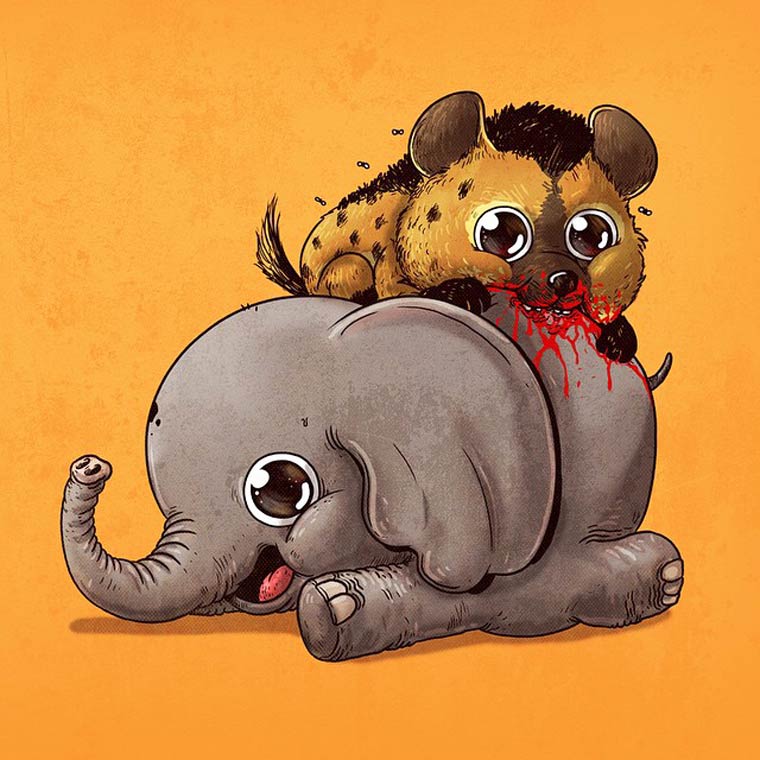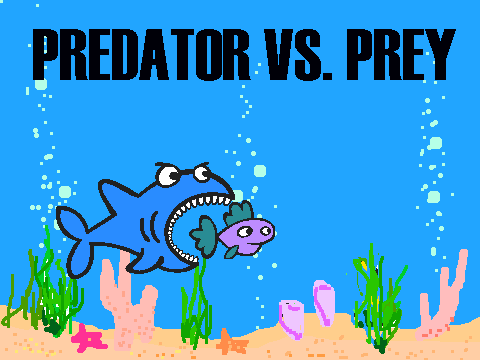
To turn the remaining two pairs into equilibrium solutions, we’ll solve each pair as a system of linear equations. The first pair, ?L=0? and ?Z=0?, is the solution ?(0,0)?, so the pairs become The third pair, ?Z=5,000? and ?Z=0?, doesn’t include a value for ?L?, so we can eliminate that pair completely and focus on just the other three: We’re looking for each pair to generate an equilibrium solution ?(L,Z)?. So if we pair ?L=0? with both ?Z=0? and ?Z+50L=10,000?, and then in addition we pair ?Z=5,000? with both ?Z=0? and ?Z+50L=10,000?, we get the following combinations:

We need to test both solutions from the first equation with both solutions from the second equation. Setting both equations equal to ?0? gives To find equilibrium solutions, we’ll factor both equations. The equation for lions ?dL/dt? has a positive ?LZ?-term, but the equation for zebras ?dZ/dt? has a negative ?LZ?-term, which means this is a predator-prey system in which the lions are the predators and the zebras are the prey.
#PREDATOR VS PREY HOW TO#
How to determine whether the system is cooperative, competitive, or predator-preyĭoes the system of lions and zebras represent a cooperative, competitive, or predator-prey system? What are the equilibrium solutions of the system and what do they mean? The size ?a? of population ?x? supports in balance the size ?b? of population ?y?, and vice versa.Īn equilibrium solution ?(a,0)? means that population ?x? is stable at size ?a?, but population ?y? is at ?0?.Īn equilibrium solution ?(0,b)? means that population ?y? is stable at size ?b?, but population ?x? is at ?0?. Solving the system for an equilibrium solution ?(x,y)? will help you draw conclusions about both populations.Īn equilibrium solution ?(0,0)? means that both populations are at ?0?.Īn equilibrium solution ?(a,b)? means that the system is stable. How to interpret population stability from the equilibrium solutions On the other hand, because the equation for ?dx/dt? contains the higher-degree term ?bx^2?, it means that the predator population is effected by the prey population, as well as another factor, like carrying capacity. Because there are no higher-degree terms in the equation for ?dy/dt?, the prey population is only effected by the predators. ?x? is the predator population because ?cxy? is positive, and ?y? is the prey population because ?-gxy? is negative. Sometimes one or both equations will contain higher-degree terms. What it means when the system contains higher-degree terms In a predator-prey system, the equation whose ?xy?-term is positive represents the predator population the equation whose ?xy?-term is negative represents the prey population. If one sign is positive and the other is negative, the system is predator-prey. If both signs are negative, the system is competitive.

If both signs are positive, the system is cooperative.


 0 kommentar(er)
0 kommentar(er)
